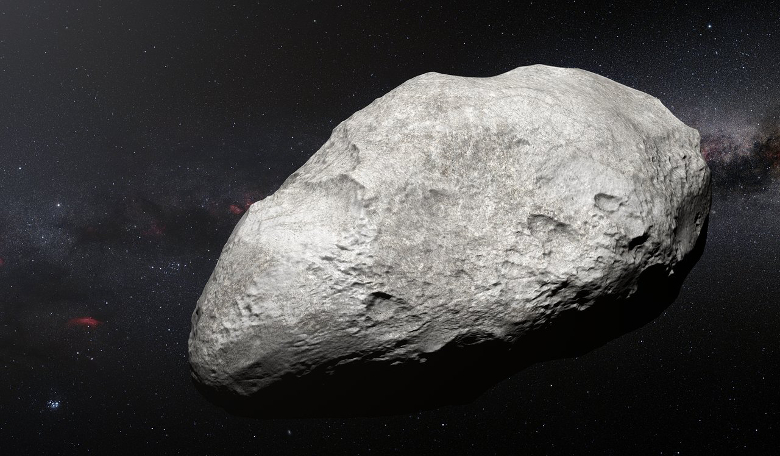The Kuiper Belt is home to hundreds of millions of objects but lurking within astronomers have spotted a relic of the inner primordial Solar System - the first of its kind to be confirmed so far away from the Sun.
The discovery of 2004 EW95, made by an international team of astronomers using ESO’s Very Large Telescope, helps strengthen theories about the dynamical evolution of the Solar System that describes how the planets ended up where we see them today.
One of the most widely accepted models of the Solar System's early evolution is the Nice model - named after Nice in France where the model was developed. The core idea is that after its chaotic beginnings, the gas giants brought further turmoil as they migrated inwards towards the Sun and then outward, disrupting and scattering objects as they traipsed through the Solar System.
Smaller, carbon-rich objects that typically would have populated large swarths of space closer to the Sun, were consequently booted out and flung billions of kilometres beyond the orbit of Neptune, some 30 plus astronomical units (AU) away.
2004 EW95 is one such body and it likely started life in the asteroid belt between Mars and Jupiter. Carbonaceous or C-type asteroids are the most common type of asteroid – Bennu, the target asteroid for NASA’s OSIRIS-REx mission is one, but like most of this type they typically orbit a lot closer to the Sun.
2004 EW95 on the other hand is an exiled interloper and its new neighbourhood is packed with millions upon millions of asteroids made predominantly of rock and metal. Despite its size – 2004 EW95 is roughly 300 kilometres across – its discovery is quite a find because not only did the team have to search through an untold number of objects to locate it, but as c-types contain a large amount of carbon, they have a very low albedo, meaning they do not reflect much light.
Coupled with the distance to the Kuiper Belt, it was like looking for a giant mountain of coal against the pitch-black canvas of the night sky, said Thomas Puzia from the Pontificia Universidad Católica de Chile and a co-author of the recent paper detailing the research.
“Not only is 2004 EW95 moving, it’s also very faint,” adds lead author Tom Seccull of Queen’s University Belfast. “We had to use a pretty advanced data processing technique to get as much out of the data as possible.”
What helped earmark 2004 EW95 as something of an oddball was the existence of phyllosilicates and ferric oxides in the asteroids spectra – the specific pattern of wavelengths of light emanating from an object. Kuiper Belt Objects (KBOs) typically have uninteresting and featureless spectra that reveal little information about their composition, so the presence of these two minerals helped to strengthen the case that 2004 EW95 was no ordinary KBO.
“While there have been previous reports of other ‘atypical’ Kuiper Belt Object spectra, none were confirmed to this level of quality,” comments Olivier Hainaut, an ESO astronomer who was not part of the team. “The discovery of a carbonaceous asteroid in the Kuiper Belt is a key verification of one of the fundamental predictions of dynamical models of the early Solar System.”











